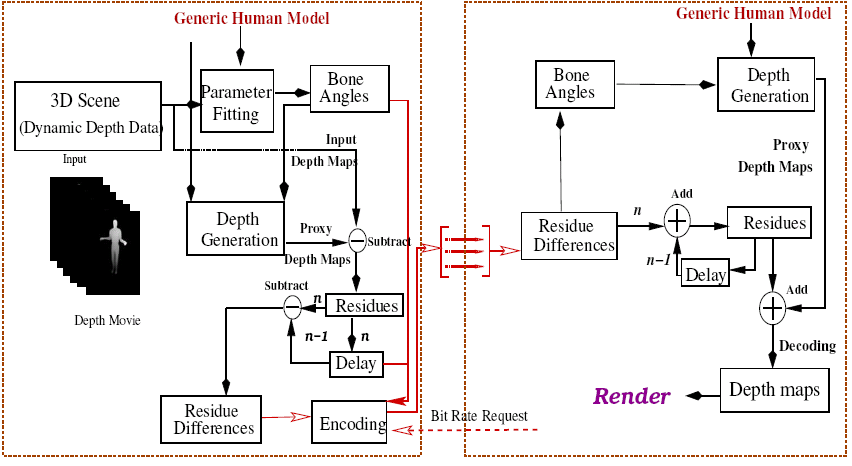Imaging and Depth Estimation in an Optimization Framework
Avinash Kumar (homepage)
Computer Vision is the process of obtaining information about a scene by processing the images of the scene. This reverse process can be mathematically formulated in terms of various unknown variables. Given the images, these variables will satisfy some constraints. For example the variables could be the intensity values at each pixel location in an image and the constraint being that these values have to lie between $0$ and $255$. An objective function can be formed in terms of variable and constraints. This function has the property that a set of variables which will minimize this function i.e. the global minima of this function, will be the desired solution. Often in Computer Vision, the number of possible solutions is large due to which the objective function has a number of local minima. The exhaustive search for global minima becomes computationally intensive. This thus becomes a Combinatorial Optimization problem in vision. Recently, a number of techniques based on Minimum Cut on Graphs have been proposed which are fast and efficeint. They lead to a polynomial time approximately global minima. The solutions obtained using these techniques on benchmark problems have performed better than optimization techniques developed earlier. This has led to renewed interest in the field of Optimization in computer vision in recent times. For a vision problem, obtaining a global minima using efficient optimization methods is not enough if it does not correspond to the desired solution. The formulation of an accurate objective function is also an important aspect. In this thesis, we have first proposed new objective functions for problems in Imaging and Depth estimation from images and then formulated them as optimization problems. The two main problems of imaging which have been addressed are Omnifocus Imaging and Background Subtraction. Omnifocus imaging is important as it helps to generate an image which has a large depth of field which means that everything being imaged is in focus. This is critical to many high level vision problems like object recognition which require better quality sharp images. The input to this problem is a set of images which are focussed at different depths. These images are called as multifocus images and are captured from a Non-Frontal Imaging Camera (NICAM). A new calibration technique for calibrating this camera is also proposed. This helps in registration of input images from NICAM. A Focus measure in omnifocus imaging finds the best focussed image from the set of multifocus input images. We have proposed a new Generative focus measure in this thesis. The removal of Background from images is another imaging technique where the unwanted regions in the image are removed. We have proposed a new objective function for background removal for the machine vision problem of monitoring Intermodal Freight trains. The objective function is optimized using Graph Cuts based optimization. We have also developed another techniques based on finding Edges in an image and Gaussian Mixture Modeling for background removal in such videos. In Depth estimation, the thesis has proposed range estimation from images generated from a NICAM in an optimization framework. The constraint used in this framework is that the nearby points in the three dimensional world have got the same depth. Thus the proposed optimization framework allows for accurate and smooth depth estimation in real world scenes. We show results on real data sets.
| Year of completion: | 2007 |
| Advisor : | C. V. Jawahar |
Related Publications
Avinash Kumar, Narendra Ahuja, John M. Hart, U.K.Visesh, P.J. Narayanan and C.V. Jawahar - A Vision System for Monitoring Intermodal Freight Trains Proc. of IEEE Workshop on Applications of Computer Vision(WACV 2007), Austin, Texas, USA, 2007. [PDF]
Y.C. Lal, C.P.I. Barkan, J. Drapa, N. Ahuja, J.M. Hart, P. J. Narayanan, C. V. Jawahar, A. Kmar, L.R. Milhon and M. Stehly - Machine vision analysis of the energy efficiency of intermodal freight trains Proceeding of the Institution Mechanical Engineers, Part F: Journal of Rail and Rapid Transit, ISSN 09540-4097, Volume 221, Number 3/2007, Pages 353-364, 2007. [PDF]

